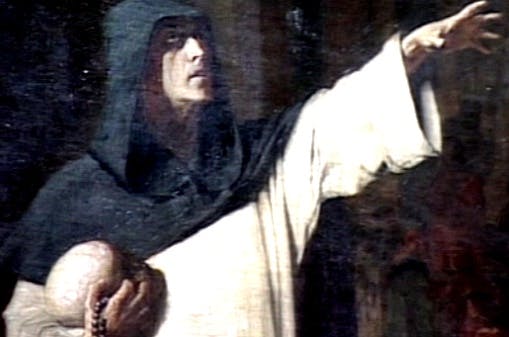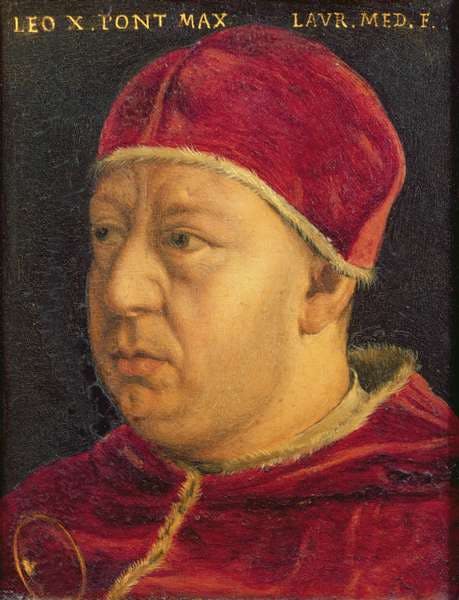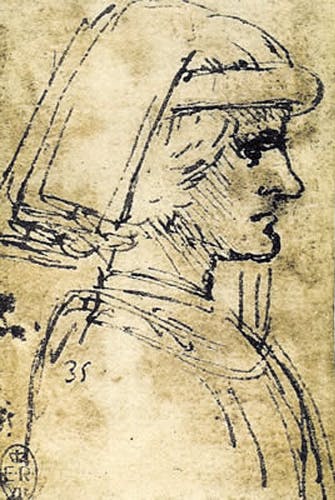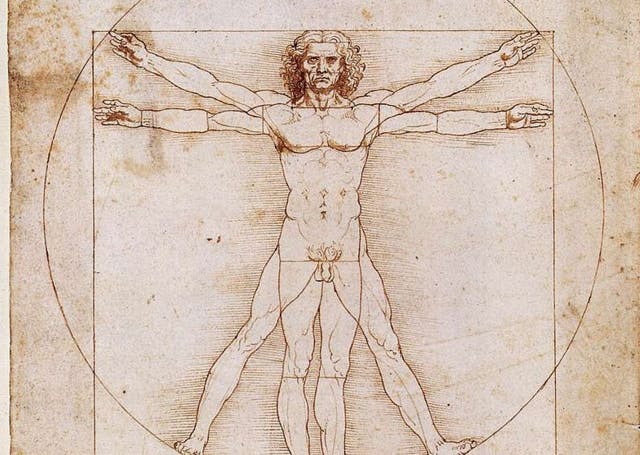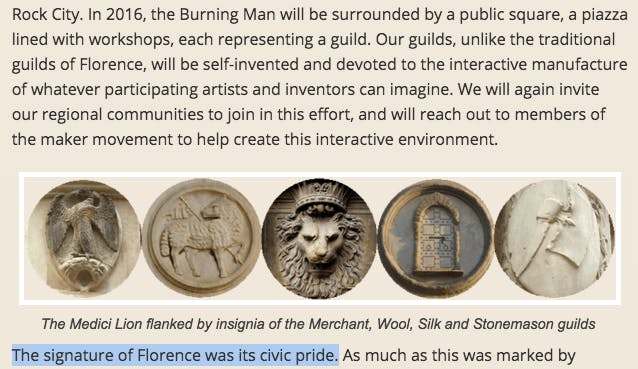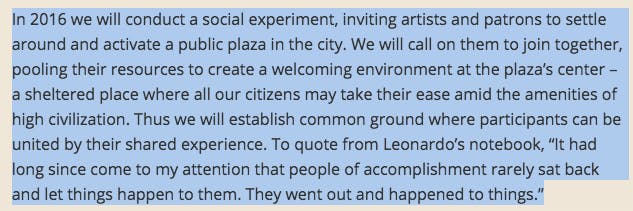On October 27, Burning Man announced that their art theme for 2016 will be influenced by the Italian Renaissance in Florence, which they are calling, “Da Vinci’s Workshop.” I’ve never taken much of an interest in Burning Man, but this caught my eye. I am a Ph.D. student in Art History focused on exactly the period Burning Man is emulating. It is so rare to see the Italian Renaissance in pop culture that I got excited. This was a mistake.
The fanciful utopian history Burning Man has written to underpin this journey is an utter farce.
Burning Man’s introduction on their website has historical inaccuracies, overstatements, or debatable claims in pretty much every sentence. In fact, almost every clause has an error. It’s not that I expect Burning Man to have an exhaustive knowledge of the period, but it’s frustrating that they’ve written a history that is utterly fanciful.
Below is the introduction, straight from Burning Man’s website, in which I’ve spliced in my comments every time I saw a historical statement which I thought needed clarification.
One immediately shows oneself to be unknowledgeable about the Italian Renaissance when one refers to Leonardo as “da Vinci.” Vinci is a town in Tuscany, ergo “da Vinci” means “from Vinci.” It is not a family name. “Da Vinci” refers to anyone from Vinci. Even if it was a family name, it could refer as well to Leonardo’s nephew, a sculptor named Pierino da Vinci who died in his early twenties. However, to Burning Man’s credit, for the rest of the introduction, they refer to him correctly as Leonardo.
Though there is no accepted beginning and end date for the Renaissance (many historians would even challenge the term “Renaissance” and call this period “Early Modern”), the dates Burning Man has chosen are a little strange.
Florence was an artistic center in the 1300s and remained an artistic center well into the 1600s. I’m guessing Burning Man is trying to refer to what is sometimes considered to be the golden age of the Medici family, whom they extol in the rest of the intro. However, in that case, their time frame is too broad. I also wonder if Burning Man knows that its history has included the period in which a fire-and-brimstone-type preacher named Savonarola spoke vigorously against the wealth that the Medici family were accumulating and inspired a mass uprising in which they were exiled. Savonarola, it must be said, was not at all a fan of art.
Savonarola instituted the so-called “Bonfire of Vanities” in 1497 in which many manuscripts and paintings were destroyed, including paintings by Botticelli. (Shortly thereafter, he himself was burned at the stake, but the Medici family were not able to return to Florence until 1512.)
Burning Man’s end date of the early 16th century is curious too. After all, they seem to be just barely excluding the Medici pope Clement VII, who reigned from 1523 to 1534. Perhaps this is because they want to celebrate Florence’s republican government and this period is a bit of a buzzkill for the Florentine Republic. Really, more of just a kill-kill, since the Medici family dismantled the republican government and installed themselves as dukes in the 1530s (but this was a long time coming, as we’ll see). Whoops!
Interestingly, Burning Man is, however, including the reign of the first Medici pope, Leo X (r. 1513 to 1520), who presided over the church that Martin Luther was to criticize so famously in 1517. Whoops, again!
Phrases like “launched Europe out of the dark ages and into modernity” when applied to the Renaissance should be stricken from existence. It is clearly influenced from histories written in the Renaissance about the period before the Renaissance for self-serving purposes and cannot be taken at face value as being accurate.
When people refer to the Dark Ages, they usually mean from the end of the Roman Empire (date disputed, but in this context they usually mean in the 400s CE) to the beginning of the Renaissance (again the beginning of the Renaissance is a disputed date, but for the sake of ease, let’s say around 1400)—in other words, 1,000 years that were “dark”? Could anyone really believe that so little of consequence happened in 1,000 years? Let’s not forget that this period in European history is marked by the building of some of the most beautiful churches in history, some of the greatest theological writings in history, the reign of Charlemagne and his successors, and on and on and on.
Certainly the elites were interested in humanist ideals, but how much did the citizens care? Saying that Florence cared about humanism is deeply misleading unless you also acknowledge that it was a deeply religious city as well.
So, Italy didn’t have science in the centuries before the Italian Renaissance? The medieval period was deeply engaged with mathematics, optics, geometry, astronomy, chemistry and alchemy as much as they were able. They were deeply interested in Greek philosophy and in Aristotle’s scientific writings. It may seem quaint to us, but it is not fair to suggest that science did not exist before the Renaissance—they were deeply engaged in understanding how the world worked.
It seems very Silicon-Valley-like to me to believe that a group of people could “redefine Western civilization,” and that it is possible to bring light to those metaphorically blind masses. Unfortunately, the idea that this is what occurred in the Renaissance comes from Renaissance writers themselves—in art, this is particularly clear in the 1550 and 1568 histories written by Giorgio Vasari —and they were trying to toot their own horn rather than present a balanced view of history. It is a mistake to take them at face value.
They must be referring to Michelangelo’s experiments with LSD.
There is some truth to this, but this statement is pretty misleading for reasons that will soon become apparent.
Alright, we have to pause here for a moment here for some clarification about the Florentine republic. The Florentines were very proud of their governmental system, this much is true: but it did not look like any form of utopian government that Burning Man would want to emulate.
First of all, the only people who were eligible to serve on the government were people from the most important and richest families. Therefore, even in the best of times, the Florentine republic was much more of an oligarchy than a democracy. The main governing body was a group of nine men—no women, it goes without saying—who ran Florence as a committee. These men were (not joking) “elected” to serve by having their names drawn from a bag, lottery style. The terms were very short, two months each.
In the time period Burning Man is discussing, the republic was pretty much “in name only” because the Medici family controlled all important governmental decisions. They ruled essentially as princes and this was hardly a secret. As I mentioned earlier, after their second exile, the Medici family did away with the fiction of a republican government entirely and from then on called themselves dukes. In other words, Renaissance Florence was far from what we would consider a democracy.
The elite always considered artists essentially as skilled craftsmen and treated them as such. Though it is hard from documents alone to piece together what the relationship between artists and patrons was, to me, it always seemed a bit more like the relationship between a Wall Street banker and his skilled tailor. Artists might be respected and cherished, but they were hardly considered equal to the nobles and very few were trained in Latin, which would be essential to be accepted in the upper intellectual classes.
Michelangelo, for example, who actually did belong to a noble family, needed vigorously to assert this fact to his patrons who sometimes tried to treat him as a lowly artisan. Furthermore, he really had to convince his father to let him become an artist!
He’s not the only one like this, either! Both Brunelleschi’s and Leonardo’s fathers were notaries—a relatively minor position in the legal profession. Fra Filippo Lippi’s father was a butcher; and Fra Bartolomeo’s father was whatever a “muleteer” is. (See Richard Goldthwaite’s book The Economy of Renaissance Florence, p. 350 for the a longer list of artists whose family professions were in entirely different fields.) But this doesn’t necessarily prove that being an artist was a means of social advancement. It may have been a means of economic advancement for some talented people, though.
To be patronized by princes or popes, an artist would have to leave Florence-Utopia, though!
Simply false.
This is true, if a bit overstated.
This is a more difficult statement to prove than it seems on face value. Again, it seems to be diminishing the cultural importance of Christianity at this time.
I’ve never studied the Vitruvian man drawing in particular, but it would be interesting to see Burning Man contextualize this within Leonardo’s other drawings.
They offer a incredibly fascinating look at Leonardo’s mind as he tries to figure out the relationship between things. Why does grass look like hair? What happens to water as it flows out of a pipe? They are really wonderful. That said, to our modern eyes, the drawings sometimes look a bit naive in their form of empirical scientific analysis.
That seems like a lot of unnecessary effort to make a big thing spin. I can’t imagine that Brunelleschi or Leonardo would be interested in putting so much effort into such a stupid task.
Is there more than one Florentine cathedral at this time? Or is it more likely that Burning Man’s organizers don’t know the difference between a church and a cathedral?
Also, Brunelleschi did not “design and construct” the Duomo— he just made the dome. This was no small task, as it was the largest dome in Christendom and he made it without using scaffolding. It took nearly four centuries for art historians to learn just how Brunelleschi was able to do this. What is equally amazing, if also a little puzzling, is that for more than 100 years the Florentines were building their cathedral knowing that it was too large to put a dome over it, but trusting that they would figure out the science when it came time to build it.
I think Burning Man is confusing Leonardo and Brunelleschi here. Leonardo made lots of cool machines. Brunelleschi was no slouch when it came to engineering, but to my knowledge, the only true invention he is credited with is drawing in one-point perspective. If this is true, this is not a small feat.
This drawing is of a flying machine and it looks really cool and amazing for its time, but calling it the prototype of a helicopter is a giving a lot of credit to Leonardo. Again, contextualization would be nice.
Of course, in the Renaissance, none of these words had their current meanings. What Burning Man organizers mean by “art,” “science” and “technology” pretty much all would have fallen under the umbrella of philosophy or liberal arts in the Renaissance.
This is true, but did any Renaissance city not have civic pride?
The term “first family” is not applicable to the Medici family since they would deny that they were the rulers of Florence in Lorenzo’s time. Additionally, some scholars think that Lorenzo didn’t actually write his own poems. Also, he was a terrible banker and nearly bankrupted the family by spending so much on his palazzo (palace). His cousins sued him for spending their investments on his private collection.
Also, Lorenzo would probably be a bit uncomfortable if you called him a politician to his face, since this would acknowledge that he was running the government (which he wanted to deny). In fact, when he was challenged about how much political power he had, he said, “I am just a citizen, but with some authority.” Classic Medici understatement.
“Befriending artists” is not really the right phrase to use here, either—at least, one would find it really difficult to prove in any definitive way. If you were an artist, it would be great to be patronized by Lorenzo de’ Medici—but it is very unlikely that he would then become anything like what we would call a “friend.”
The idea that Lorenzo acted with “a remarkable lack of fanfare” is simply laughable.
Many of these ideas of “privacy” Burning Man claims to be opposed to were actually begun by the Medici family. After all, Lorenzo built one of the largest, and one of the earliest private collections known at that time. In any case, the words “private” and “public” are a little confusing in the Renaissance because the home was used to receive guests so frequently – but the most valuable parts of Lorenzo’s collection were rarely shown.
For example, the most valuable object in Lorenzo’s collection—an ancient Roman cameo known as the Tazza Farnese, which, when Lorenzo died in 1492, was about 12 percent of the value of his entire collection—was rarely displayed. (Additionally, his collection also had a “unicorn horn,” which was worth eight percent of the value of his collection). Lorenzo’s vast art collection suggests that he did not believe that what is private should be made more public.
Since the real history of Renaissance Florence of this time is, in part, the story of the Medici family—a massive accumulation of wealth, material objects and political power, the family’s overthrow, return, overthrow again, return again, dismantling of the Republican system, and continued accumulation of material wealth as, for centuries, Florence’s clout in world politics slowly diminished until the dynasty fell ignominiously and the family died out in the eighteenth century—the tech elite who frequent Burning Man might see the story as a bit precautionary.
There actually is something about this period of the Florentine Renaissance that would appeal to the Burning Man crowd: The Florentine art patrons believed genuinely in the idea that money could be spent virtuously and they felt that spending on art was virtuous. Several scholars have gone into this idea in some depth. I think that many people in the Renaissance looked to art to engage them in learned discussion—perhaps to contemplate morality, to visualize and understand religious concepts, and even, I think, to contemplate on the ideas of nature and of representation. Spending money on art wasn’t virtuous simply because it provided the masses with beautiful objects, but because, in the Renaissance (as in most periods), to engage with a work of art was, in effect, to seriously contemplate both the world they lived in and the spiritual world beyond this one.
I imagine that the organizers of Burning Man had this type of contemplation in mind when they conceptualized the “Turning Man.” I’m sure many bros will have wonderful acid- and shroom-induced journeys staring up at Turning Man, and may indeed come out of it with a challenged view of the world. This is a great thing. And, ultimately, it is for exactly this reason that we should spend money on art in the first place. (Well, not so much the drug-culture part, but the challenging-our-view-of- the-world part. Not that the drug part is so bad, either.)
But the fanciful utopian history Burning Man has written to underpin this journey is an utter farce. And rewriting history to our own ends is never a good thing.
That said, the Renaissance did their own rewriting of history, too. The learned elites idolized Classical Antiquity in much the same fanciful way that Burning Man now idolizes the Renaissance. In this way—though it was likely unintentional—Burning Man actually has done a decent job emulating the Renaissance.
Image via Wikimedia Commons/Public domain




